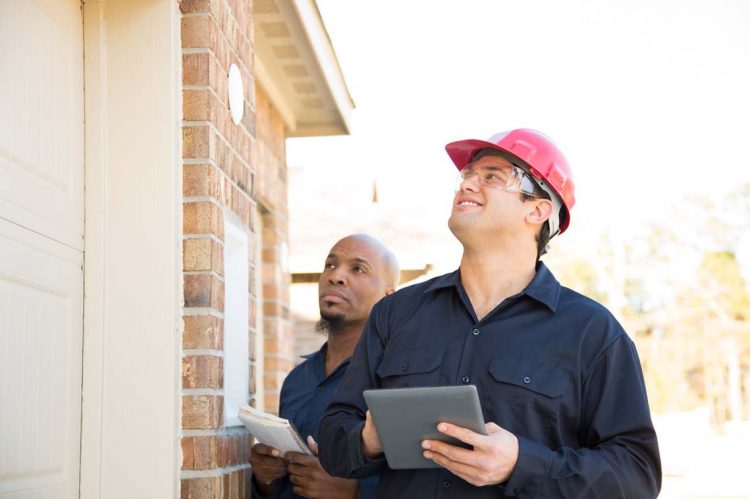The pandemic has flipped the rulebook on longstanding real estate trends and processes. The flight to single-family homes and suburbia and the increasing role of virtual reality and digitalization in the home buying process has created lasting changes in the industry. Low mortgage rates over the summer led to a 7% increase in national home sales in September. Entrepreneurs and investors are flooding the hot housing market too. Investments in the proptech sector exploded to hit $3.1 billion in the first six months of 2021. But those who follow the appraisal sector know that it’s one area that has lagged in tech innovations, but industry-wide changes have started.
The modernization of the appraisal process is more a matter of “when” than “if.” A big push in this direction came from the Federal Housing Finance Agency (FHFA) in October, when it approved desktop appraisals permanently starting in 2022. What began as a temporary accommodation implemented in March 2020 to keep the homebuying process afloat during pandemic lockdowns, has become widespread and readily accepted practice by both home buyers and mortgage lenders. It’s noteworthy that Fannie Mae and Freddie Mac will allow appraisals to be conducted remotely, using public records such as listings and tax appraisals. As they fund a quarter of all conforming loans, their acceptance of digital appraisals will lead the industry to accept a hybrid, digital-offline model in the next few years.
Avoiding unnecessary delays
Today’s red-hot housing market has created challenges for traditional appraisals that digital appraisals can help solve. Higher appraisal volumes have historically resulted in challenges with appraiser availability which directly impact how quickly a borrower can close their loan (even adding up to two weeks to the appraisal process). Virtual inspection technology can help ease some of the burden on the appraiser to allow them to spend more time researching, analyzing the market and completing the appraisal report.
Furthermore, with record high home prices, appraisal values have not kept pace. In August about 13% of appraisals came in below the contract price, almost double January 2020’s rate of 7.3% and a little lower than a high of 19.7% in May, when the home sales volume was highest. The lower appraisal values create friction in the homebuying process that many home buyers may not expect. To complete the home purchase, they may need to renegotiate the purchase price with the seller, come up with more cash at closing to make up the difference, or abandon the purchase, if they did not waive the financing contingency. All these delays should be unnecessary with the tech available and could be avoided if we moved to a faster digital appraisal process that provides an accurate home value while saving days in the appraisal process, especially in a quickly appreciating housing market like the one we are in today.
There’s a lot of technology that could be deployed in a hybrid, digital-offline appraisal model. Whether it is machine learning to identify comparable nearby sales and generate valuations based on real-time sales or the adoption of a document vault for e-signed documents, the possibilities are plenty. There will always be a human component to the homebuying process, and there are many ways technology can leverage the existing in-person, professional real estate infrastructure for a better homebuying experience.
Gaining transparency
During the buying process, the buyer’s real estate agent is usually at the home inspection to let the inspector inside. Soon, the agent could video the inspection at that time and upload it to a digital document vault so the appraiser can use the video to view the interior of the house and view the measurements and floorplan of the home. Using LiDAR technology already present in most new mobile phones and mobile apps can accurately capture the measurements of a home and layout a floor plan for the appraiser. We then have a standardized measurement process and output to avoid any discrepancies from one appraiser to another when measuring a home.
The Gross Living Area (GLA) measurement is a key data point for determining the value of a home and it could be attained at the same time. This would have many benefits for the homebuyer and mortgage lender as the buyer would have documentation of the condition of the home for potential price renegotiations and the appraiser would have more accurate data in any market condition. Much transparency would be gained with more digital documentation of a home during the homebuying process.
Seizing the chance for innovation
Currently, there’s so much lending and appraisal volume that there is not much bandwidth in the industry to consider truly impactful changes in the way the appraisal and lending process is executed to make it more automated, streamlined and faster. With mortgage rates ticking up in the past month, we will see sales slow and that’s going to give everyone time to breathe and evaluate how as an industry we can incorporate automation into the backend of the lending process. It will be up to the industry to seize the opportunity to technologically move the appraisals process forward.
The modernization of the appraisal process can be accomplished in the next few years—perhaps as early as 2023. With Fannie Mae and Freddie Mac accepting the desktop appraisal, momentum to innovate the backend of the mortgage lending process will lead to new digital and data-driven technology and industry processes that make lives easier for appraisers, service providers, lenders and, most importantly, homebuyers. It’s part of real estate’s larger digital transformation, and it’s only a matter of time before we see the appraiser piece of proptech bloom.
Phillip King, Principal Product Manager, ServiceLink. For more information visit https://www.svclnk.com/.












